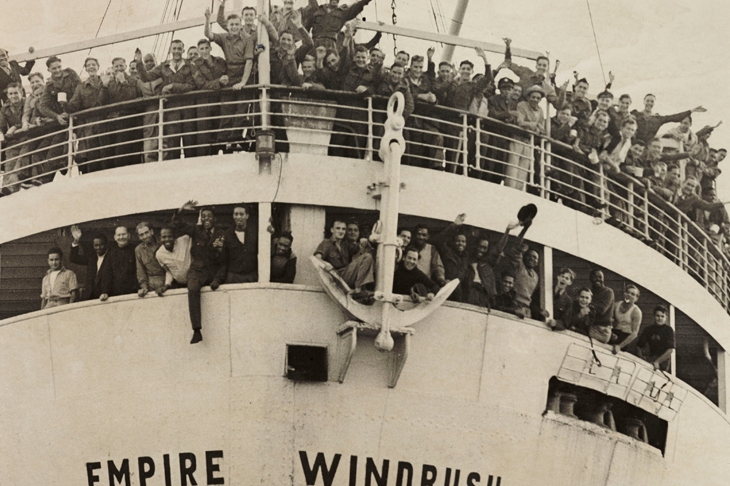There was one of those moments late on Sunday night when a voice is so arresting (either through tone, timbre, or from what’s being said) that you just have to stop what you’re doing and listen, really concentrate, anxious not to miss a word. Floella Benjamin was on the Westminster Hour on Radio 4 talking about the 70th anniversary of the arrival of the Empire Windrush at Tilbury Docks with 500 passengers from the Caribbean. Nothing unusual about that; it’s an anniversary that’s been given a lot of coverage. But then she started talking about her own experience of coming to the UK by boat, in 1960, with her three siblings, travelling by themselves across the Atlantic to join their parents, who had gone on ahead with two of their children to find work. She was just ten and had not seen her mother for 15 months.
Perhaps because I still think of her as the bouncy, happy, enthusiastic face of Play School in the 1970s, what she said had extra resonance. ‘It was like an adventure on the high seas,’ she told us, her voice filled with excitement at the memory. ‘We felt we were freed.’ They had been living with foster parents who were ‘rather cruel’. On arrival at Southampton she was thrilled to see her mother waiting for them by the quayside ‘like an angel’. She was, though, soon confused to notice that everywhere they went people kept staring at her. From that moment, she became, she said, no longer Floella but ‘a colour’. Unlike in Trinidad, people didn’t identify her as a person any more.
Later in the week we heard from four ‘immigrants’ who in May 1977 had been at a huge rally in Handsworth Park, close to the centre of Birmingham, celebrating African Liberation Day. They were all featured on a photograph taken that day by Vanley Burke. In Face in the Crowd on Radio 4 (produced by Caroline Raphael), Burke talked about how his first camera, a Kodak Brownie 127, had been sent out to him in Jamaica by his mother, who had left for the UK without him in 1955 when he was just four. It was ten years before she sent for him to join her.
Rather than complaining about his experiences when he arrived in a country not yet ready to accept his difference, he felt it was important to use his camera ‘to document ourselves’. He was at the rally with a much better camera and took ten rolls of the crowd that had gathered to listen to speakers from Angola and South Africa, Jamaica and the USA. He knew it was a significant day, but strangely there was no coverage in the press about what was probably the biggest gathering of black people in the UK yet to take place.
Derek Douglas, Norville Bynoe and Louisa and Rhonda Nisbett were all there as late teenagers: there’s Bynoe wearing a crocheted beret to hold up his Rasta locks; Louisa and Rhonda, sisters, are both wearing headscarves. They found a voice that day, they all said, a sense of identity, which had been missing, as their parents, ultra-conservative, had not talked about where they came from or the covert racism they faced every day. They just rolled up their sleeves and worked. For their children, settling down was not so straightforward. At school they learnt nothing about African or Caribbean history, ‘our history’.
There were no white people present at the rally (you can check that out by looking on the Radio 4 website), and even more surprising, no police. That’s why it was not newsworthy — there was no trouble.
Saturday night’s Between the Ears (produced by David Waters) gave us an immersive binaural experience (only with headphones) as if we were camping out in the Amazonian rainforest — birdsong, insects buzzing, the shushing of wind through the canopy and some eerily distant chanting. We were taken there by the anthropologist Laura Rival who with her nine-year-old daughter and a tape-recorder travelled into the dense forests of Ecuador in search of the Huaorani people who live as ‘outcasts’, too strange and remote for the other indigenous people.
‘It’s so hard for a westerner to understand the life of the forest,’ said Rival, who had to send her daughter home after she became too ill while deciding to stay on herself. The Huaorani could identify so many sounds (they could hear an aeroplane two or three minutes before Rival), and knew exactly what was around them — deadly snakes and stingrays. ‘Where there was danger,’ said Rival, ‘I was oblivious to it.’ Days passed and nothing happened, except people having a great time together. She learnt about ‘living in the present moment, with other people, and really sharing that moment with them. That quality of being a human.’






Comments